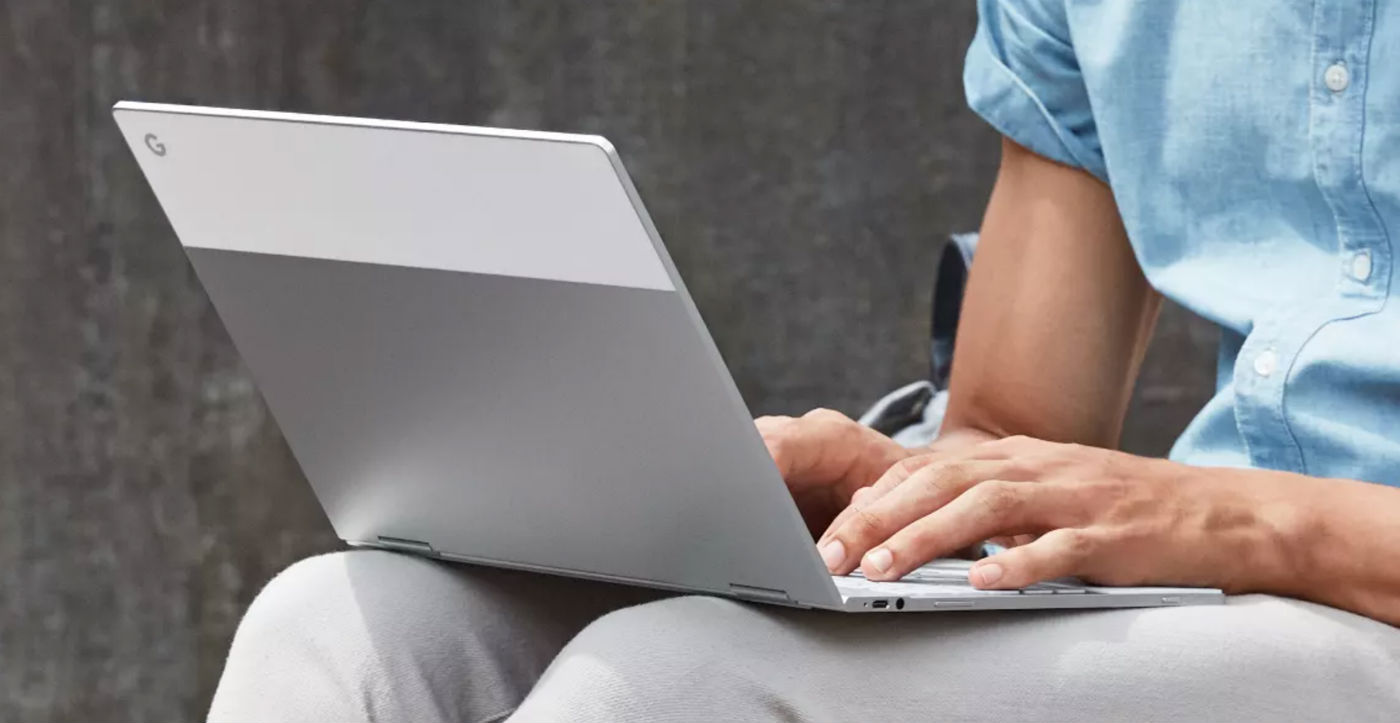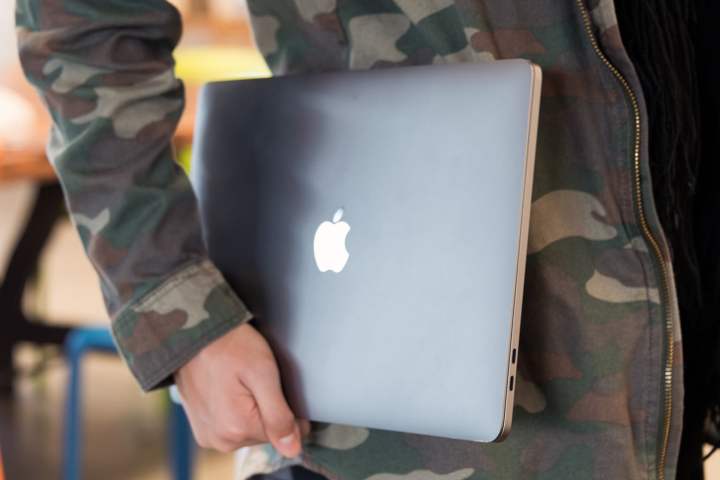If you’re shopping for a new laptop, chances are you’re overwhelmed by all the different choices and configurations. As a Windows PC owner, maybe you’ve heard good things about Macs and Chromebooks and want to know more about their differences. Maybe you already have one of these devices and really need an upgrade.
In this battle for your hard-earned bucks, we pit Google’s Pixelbook against the latest 13-inch MacBook Pro. These computers were built with the same kind of person in mind — someone who wants a premium computer that looks as good as it runs. However, they are two very different laptops that can serve very different purposes, particularly in terms of software and operating system.
Before you make the jump to Chrome OS or open up your wallet for Apple, read on to find out more in our Pixelbook vs. MacBook Pro comparison.
Design
Good news: Laptops no longer look like black slabs, devoid of personality. Whether you’re looking at machines from Dell, Microsoft, or HP, design has finally become an important aspect of laptops across the board.
The Pixelbook and the MacBook Pro are two of the most beautiful and unique laptops ever made. The 13-inch MacBook Pro looks fairly similar to previous iterations, especially from the outside. It has the classic unibody, aluminum chassis that has become iconic of the MacBook line. Once you open the machine, however, you’ll see the narrowed-down bezels, expanded TouchPad, shallow keys, and thinner body.
Google’s Pixelbook design matches the look of the Pixel smartphones. On the lid, you’ll find the same two-tone color scheme of aluminum and glass, with some similar design language happening on the inside across the keyboard and palm rests. The only parts of the design that feel out of place are the chubby bezels that surround the 12.3-inch screen.
Switching back and forth between the two laptops, the two most notable differences are the bezels on the display and the overall weight of the laptops. The MacBook Pro weighs three pounds, which is nothing to sneeze at, while the Pixelbook weighs just 2.4 pounds.
It’s admittedly difficult to pick from these two, and we do think both are nice systems. However, we have to go with the classic MacBook Pro. While the Pixelbook is handsome, it has a few small quirks, like a slippery glass panel on the display lid that can make the laptop hard to keep in your hand. The MacBook Pro feels more mature.
The Pixelbook is a laptop with a 360-degree hinge, meaning the lid can be folded back into Tent mode, and even flattened against the Chromebook’s bottom for Tablet mode. That also means the Pixelbook has a touchscreen and a stylus (though the latter is a $100 option), two features the MacBook Pro lacks.
Unlike the rest of the computing industry, Apple has resisted the trend of touchscreen laptops, and instead introduced the Touch Bar, now available on all MacBook Pro models, as a solution to that problem. The Touch Bar is a small OLED touchscreen that shows contextual options. However, it hasn’t been supported as well as Apple may have hoped.

Though Chrome OS isn’t designed with the touchscreen in mind, the addition of Android app capabilities does make a case for touch as an input method on the Pixelbook. To make things even sweeter, the Pixelbook has an extremely impressive display with a pixel density even better than the MacBook Pro, although it’s not as color accurate.
In terms of port selection, the two computers look forward to a USB-C future, leaving behind the world of USB-A, power, HDMI, SD card, Ethernet, and every other port you have on your old computer. That’s probably going to rule out some people from wanting either of these laptops, but Google and Apple seem to be aligned on their stance toward port selection.
The base Pixelbook and MacBook Pro with M1 both have two USB-C ports, but the MacBook Pro’s are much faster thanks to their Thunderbolt 3 and USB 4 compatibility. The Intel-based MacBook Pros have four USB-C ports.
Performance

Here’s where the dividing line becomes really apparent.
The Pixelbook comes with a dated 7th-gen Intel Core i5-7Y57 processor, upgradable to a Core i7-7Y75. It’s still a capable processor despite its age and a good match for the Pixelbook. If you want to play graphic-intensive games or edit 4K video, you probably won’t be interested in a Chromebook. However, the Pixelbook won’t skip a beat in tasks designed specifically for Chromebooks.
Meanwhile, the MacBook Pro strays away from Intel while still hanging on to that specific audience. The two lower-priced starting points ship with Apple’s new ARM-based M1 eight-core chip while the two higher-priced starting points offer Intel’s 10th-generation Core i5-1038NG7 and Core i7-1068NG7 four-core chips. All three in the MacBook Pro are faster than the 7th-gen CPUs used in the Pixelbook, and that’s OK. Chromebooks aren’t designed for video editing and PC gaming. They’re meant to run web-based and Android apps.
Still, if you like numbers, here are a few pulled from the Geekbench single-and multi-core tests:
| Single | Multi | ||
| i5-7Y57 (2 cores) | 713 | 1279 | Pixelbook |
| i7-7Y75 (2 cores) | 750 | 1535 | Pixelbook |
| i5-1038NG7 (4 cores) | 1206 | 4224 | MacBook Pro |
| i7-1068NG7 (4 cores) | 1381 | 4948 | MacBook Pro |
| Apple M1 (8 cores) | 1727 | 7489 | MacBook Pro |
Again, you don’t need a lot of horsepower to run web-based and basic Android apps on a Chromebook. Only when you install Linux desktop software and run graphics-intensive games will you feel the pinch of those 7th-gen Intel chips. Chromebooks have evolved since their original web-only concept, requiring a bit more horses under the hood than ever before, but it really depends on what you want to do with your laptop.
Those eying a MacBook Pro will need to be wary about the M1 version. Because it’s based on ARM’s CPU and GPU core designs, it won’t natively run desktop software developed for Intel-based machines. Instead, the software must run through an emulator built into MacOS Big Sur. That could mean desktop software won’t feel quite as snappy on the M1 configurations compared to the Intel models. That said, performance should only be an issue until developers release a version of their software that natively runs on M1.
For more general performance right now, you could consider the 16-inch MacBook Pro with a 9th-gen Intel Core i7 or i9 processor and discrete AMD Radeon Pro graphics.
Battery life
Laptops in the Chromebook and MacBook lines are both known for their endurance. While some of the standard benchmarks don’t work in Chrome OS, for our review of the Pixelbook we did run the Basemark browser benchmark to see what it could do. The Pixelbook saw surprisingly good results, lasting four hours and ten minutes.
In our testing of the MacBook Pro with Apple’s M1 chip, we averaged over 16 hours in our browsing test and over 21 hours in our video loop test. That’s because, again, the M1 chip is based on ARM’s CPU and GPU core designs, which are mainly used by Qualcomm, Samsung, and even Apple for mobile devices. This design targets high-performance while sipping on the battery.
As for the Intel-based MacBook Pro, which isn’t quite so power-sipping, we didn’t provide any specific numbers in our review of the Core i5 configuration. However, we saw between six and seven hours of normal use on a single charge.
Here’s what matters in the end: Both the Pixelbook and the MacBook Pro boast a 10-hour battery life. From our tests, the Pixelbook hits that mark more reliably, but the M1 MacBook Pro has some of the best battery life we’ve ever tested on a laptop.
Software
The software experience on these two laptops is quite different. The MacBook Pro runs MacOS, a full-fledged desktop operating system. Chrome OS is a pared-down software experience that has limited functionality.
With Chrome OS, you can’t open Chrome and just download your favorite desktop software like MacOS or even Windows. Your access is limited to what’s available in the browser, in the form of Chrome Web Store extensions, Android apps, and Linux.
You can do more with these options than you might assume, especially with the addition of Android app and Linux compatibility. For some, the idea of getting access to the wealth of Android apps and games on a laptop might sound enticing, especially since it’s something Apple has hesitated to do with its own App Store and MacOS.
However, there’s no doubting the fact that MacOS is a much more expansive system that Apple continuously updates and enhances. We haven’t seen that kind of commitment from Google quite yet, although the addition of Linux support is a step in the right direction.
Price & Configurations
Neither of these computers is cheap. In both cases, you can find alternatives such as the excellent Dell XPS 13 or Samsung Chromebook Pro. With both the MacBook Pro and Pixelbook, you pay for the premium design, brand name, and exclusive features.
The lowest-priced 13-inch MacBook Pro starts at $1,299 for 8GB of RAM and 256GB of SSD storage. The entry-level Pixelbook starts at $999 and comes with 8GB of RAM and 128GB of SSD storage. But while the base Pixelbook has a 7th-generation Intel Core i5 CPU, the base MacBook Pro uses Apple’s new ARM-based M1 chip.
A premium laptop is still better than a premium Chromebook

The Pixelbook is an impressive attempt by Google to show the world that it’s serious about Chromebooks. Everything from the build quality and the display to the details of the keyboard has been meticulously designed to please.
But despite the fact that Chrome OS has come a long way from where it was (and that Apple stumbled on the launch of the Touch Bar), the MacBook Pro is a much less limited computing experience. That means it’s going to get our vote in this battle for your bucks.




